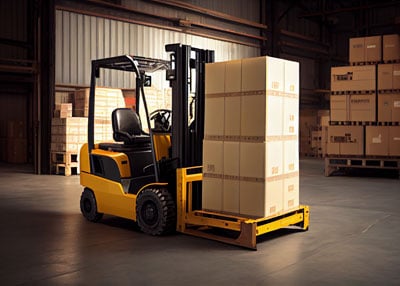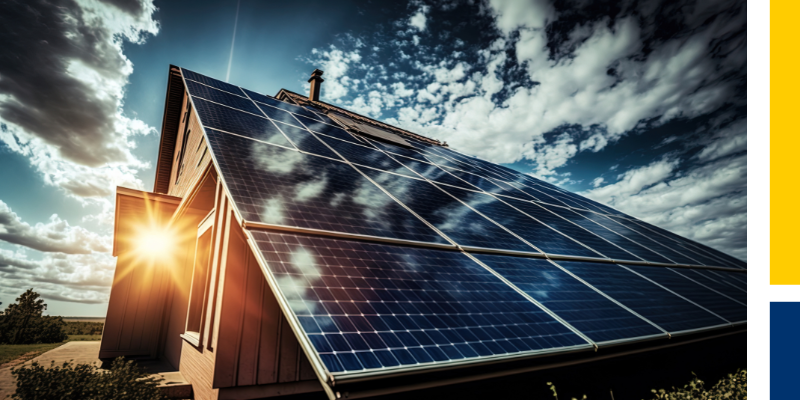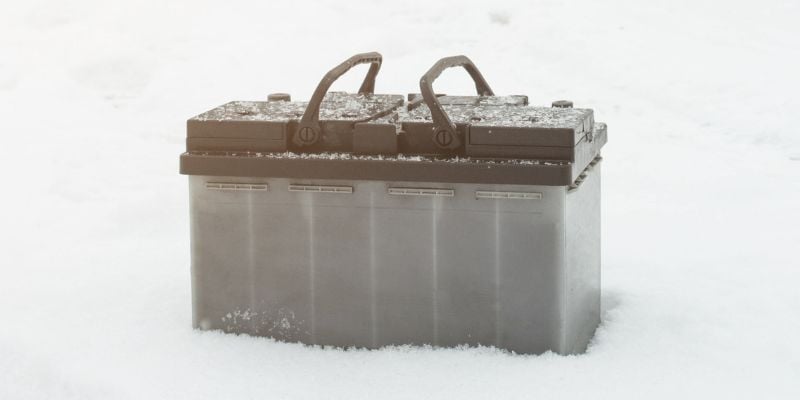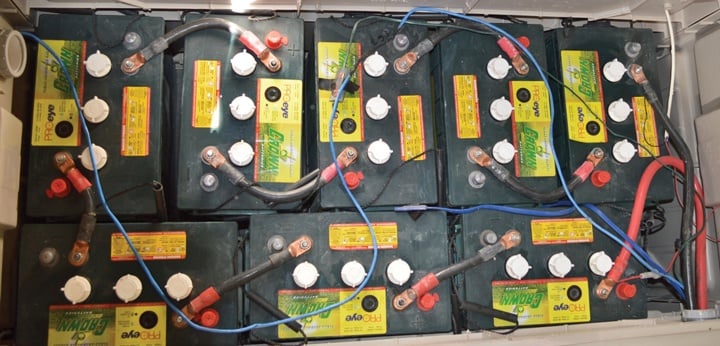As power bills rise and grid-tied net metering subsidies phase out, more and more people are going off–grid – creating and storing their own power for greater reliability, resilience, and ROI.
Going off-grid with home batteries and renewables is more straightforward, more affordable, and more popular than ever.
And it’s not just the technology that’s gotten more advanced; you’ll also benefit from more than half a century of other people’s experiences living off-grid with renewables + storage.
Today, you’ll meet some of them – from a metalworker to the Midwest Renewable Energy Association’s site manager, along with off-grid system designers and installers behind more than 30,000 successful off-grid energy projects.
Before we meet them, we’ll briefly look at the basics of reducing your energy needs and selecting energy storage systems – so you can get more hours or days of energy autonomy without buying more or bigger batteries.
First, reduce energy demands
Every homeowner and professional off-grid installer you’re about to hear from has one thing in common:
They reduce their energy needs before they compare and select batteries and battery manufacturers.
The articles we’ve linked below provide more in-depth information about getting more life out of less battery.
Meanwhile, here are some of our favorite energy bill-slashing strategies to get you started:
-
Invest in a home or building energy audit from an independent auditor. Be sure that, if your auditors also sell energy efficiency improvements, they’re held to a fiduciary standard (i.e. legally required to act in your best interest) or are an expert renewable energy/battery system installer.
-
Energy auditors should use blower door testing, thermal imaging, and other tools to scientifically measure and evaluate your building’s performance.
-
Improve air sealing for your building to ensure that conditioned air doesn’t leak out unnecessarily.
-
Always air-seal before insulating – it’s more effective, and it’s cheaper and easier to seal cracks and gaps before insulation is in place. (If you already insulated, your energy auditor will advise you on how/where to air-seal.)
-
Then, add more insulation to reduce your energy needs; the US Department of Energy has solid recommendations.
-
Talk with your energy auditor about whether you’ll get enough air turnover in your home. The best practice today is “Build it (air)tight and ventilate right.” That may mean installing an energy-efficient bathroom fan on a timer or an Energy Recovery Ventilator (ERV) or Heat Recovery Ventilator (HRV) to bring fresh air into your home.
-
Lower your other energy consumption by upgrading power-hungry appliances to Energy Star-rated models, adjusting your thermostat, and using switchable power strips to avoid wasted electricity from unused appliances and electronics.
-
Consider installing cold-climate air-source heat pumps (ASHP) or ground-source heat pumps (GSHP), which can heat and cool in one device. Since heat pumps only transfer temperature – rather than burning fossil fuels or using electric resistance –, they’re by far the most efficient heating/cooling systems available.
Second, compare battery types
based on your application, environment, maintenance, and budget.
Every battery type has pros and cons – and often, one type will be a better fit for your off-grid home, your operating temperatures and energy usage habits, how many days of autonomy (battery-only power) need, and your budget.
Recyclable lead-acid and absorbent gel mat (AGM) batteries power the majority of off-grid homes and other buildings worldwide. Lithium-ion (LI) and lithium iron phosphate (LiFePO₄) batteries have a much smaller market share but are still growing.
Some of our favorite resources to help you compare batteries are:
- Read “Find the Battery You Need,” featured in North American Clean Energy magazine, covers in-depth pros and cons of common battery types, plus key considerations such as surge capacity and depth of discharge (DOD).
- "How to Spot Greenwashing (false environmental claims) in Energy Storage" provides an overview of battery sustainability that will help you with your off-grid system.
Third, learn from other people who live, work, or install off-grid systems:
Pippi Peterson, Entrepreneur and DIY RV nomad with millions of YouTube views
Pippi operates her media and RV businesses from her home office – and her RV – and relies on batteries plus solar to power her career in her home.
Her video reveals how she ended up living off the grid and traveling the country, along with the logic behind her energy storage selection process.
Leon Dulak, Site Manager for the Midwest Renewable Energy Association (MREA)
Today, the MREA helps power its yearly Energy Fair and hands-on training sessions for thousands of people with Crown batteries. Leon Dulak is the MREA’s Site Manager and ensures the organization’s off-grid systems, buildings, and on-site installations and events run smoothly and correctly.
Dulak explains:
“Batteries are the biggest part about going off-grid. And our Crown batteries are totally reliable, even during Wisconsin winters…
“Our solar trailer has been here longer than I have – since before 2011. When our old batteries reached end-of-life, Crown helped us out by donating new batteries for our system. They’ve been dependable and easy-to-maintain the whole time.
“With Crown batteries, we never need to worry about whether the sun is out – or whether our renters will have enough power. It's really nice having something as reliable as Crown batteries. All I have to do is water them.”




The Wheelock Residence: Net-zero with an on-site welding studio, extensive energy production, and net metering (because it made financial sense to sell back to the grid)
At first, Mr. Wheelock knew he didn’t want to pay staggering electric heating and air conditioning bills to keep his 1800-square-foot home comfortable.
With help from veteran system installer Mark Snyder (Mark Snyder Electric), the Wheelock Residence reached net zero, even with welding equipment.
Read North American Clean Energy’s article to learn:
- Their strategies to go net zero
- Insulation considerations to beat the summer heat and keep heat indoors during the winter
- Simple ventilation and cooling systems to keep your home comfy in almost any climate
- And more
Click here for the entire article about how the Wheelock Residence is living the dream of net zero energy storage.
Mark Snyder, owner of Mark Snyder Electric, has lived off-grid for decades… consulted with the Department of Energy and NASA… and installed and/or designed over 30,000 renewable energy systems.
And he distills critical battery insights he’s learned after more than 40 years in the off-grid, renewable energy industry, including simple tips to select longer-lasting batteries – and the size, store, and maintain them easily and affordably.
Will Herndon, NewGrid’s president, is a leading off-grid system designer, seller, and installer for ranchers and homeowners in Phoenix and the Southwest
Will Herndon, NewGrid’s president, has spent the past 30 years in solar engineering, sales, and installation:
“First, Crown Battery saves us from unnecessary driving and re-inspections.
If we’re in the bush and a building official asks us for technical data, Crown gets us the information we need to stay on-site and finish the job. Without Crown’s support, we’d have to drive out again – eating the cost, delaying inspection, and frustrating the client.
Second, Crown provides excellent information on installation and supporting equipment. For instance, Crown’s the only company with a technical writeup on how to program set points and calculate the absorption time for a particular installation. We use it for new hire training.
Third, Crown’s spec sheets help us make the sale – and DIY installers can’t compete.”
The company only sources industrial flooded lead-acid cells, which they’ve found improve longevity and maintenance. (When we interviewed them, they’d only had to replace one client’s industrial batteries – after 12 years.)
Now it’s your turn:
If you’re considering going off-grid but don’t know where to start – or how to select the right batteries –, you don’t have to do it alone.
Battery Backup to Off-Grid - Navigating the transition provides an overview.
You can find independent energy storage + renewables installers in your area.
And if you want help comparing your battery options, you may qualify for our comprehensive, no-cost “Off-Grid Energy Storage Audit” that includes:
- Assessing opportunities to lower your energy usage
- Analyzing your existing setup
- Offering recommendations and education about energy storage options, including pros and cons and ROI
To apply for an “Off-Grid Energy Storage Audit” today, click here.














